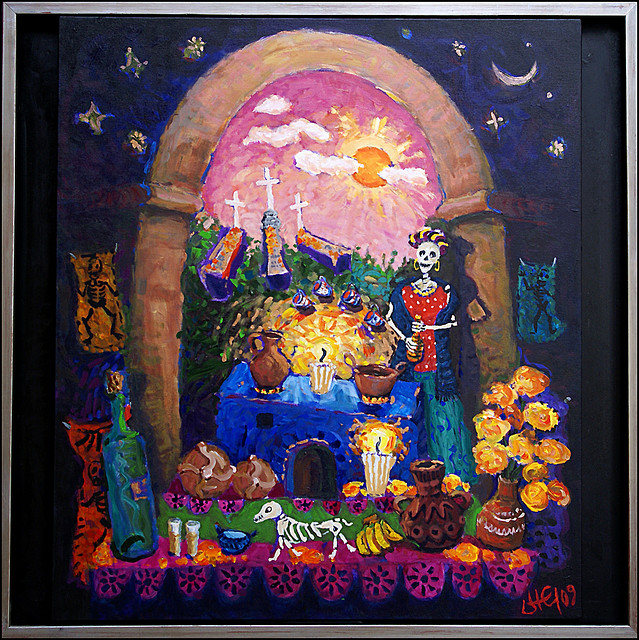Driving, I pass skeletons dangling from trees, pale ghosts, and bony hands reaching out from the earth.
As fun as Halloween is, and as alluring as the idea of becoming someone else for just a night, I flinch at the sensationalism. Our culture struggles to make space for life’s impermanence, for the long, metallic stretch of grief that pools after we lose someone we love. Someone we thought we couldn’t live without.
Can’t we talk of the dead—can’t we decorate with their memories—instead of grieving?
Especially now, in this season of shedding.
The days grow shorter, giving the silver moon more time to glow across the sky. The fabric between this world and the others frays, and I sometimes see dark, darting shapes from the corner of my eyes. This is the time that my dead feel close enough to touch, when they swim through my evening dreams and linger even after I awake. They cling to me, a sweet haunting.
And yet I find myself not speaking of them.
Other cultures bring food to their dead. During Mexico’s Day of the Dead, families build bright altars and set candles aflame. They bring bread and marigolds to warm the gravestones of their loved ones. They tell stories and arrange photos. They cozy up to their dead.
They say their names.
* * *
“When did Will die?” my four-year-old daughter asks. We are sitting at the table, finishing lunch. Her plate is topped with a half-eaten hard-boiled egg, a sprinkling of carrots.
The sound of his name punctures me.
My daughter is asking about my brother who died almost 17 years ago, long before my kids were even imagined.
“A long time ago,” I say.
“Before I was born?” she asks.
“Yes.”
“How did he die?” she asks. Her blue eyes, not unlike my brother’s were, are cornflower blue and round.
She has asked this before, as has my son. My answer has shifted a bit each year, getting closer to the truth.
“He took something that was sort of like poison to him,” I say. It’s as close as I can get to explaining a heroin-related death to a preschooler.
“Oh,” she says.
Though I’ve written extensively about grief and death, my instinct, when my kids bring it up, is still to tighten. I don’t want to scare them, scar them.
And yet, my daughter smiles as we speak. She’s not scared—she’s curious. Death is just one more thing about the world to be soaked up, like making sense of the way letters become words or the flow of time.
“Can we play princesses now?” she asks. Her questions sated, she moves on.
“Yes,” I say.
And I make a quiet promise: I will tell her stories of her uncle. I will not flinch. I will say his name.
* * *
Especially in these days when the edges of the world feel thin, let us make room for the dead. And let us listen to each other. Let us cozy up to them, to their stories, to a flash of their face, the roll of their laugh. Let us bring them bread and marigolds. Let us feel the spot where they were, like branches must feel the phantom ache where their leaves once lived.
Let us say their names.
Let us listen closely, let us hear them whisper we were here.
We were here.
If you’d like, leave a comment with the name of a loved one who has died.
More from Lynn:
What Nobody Tells Us About Grief.
Author: Lynn Shattuck
Editor: Renée Picard
Image: Ute/Flickr







Read 21 comments and reply